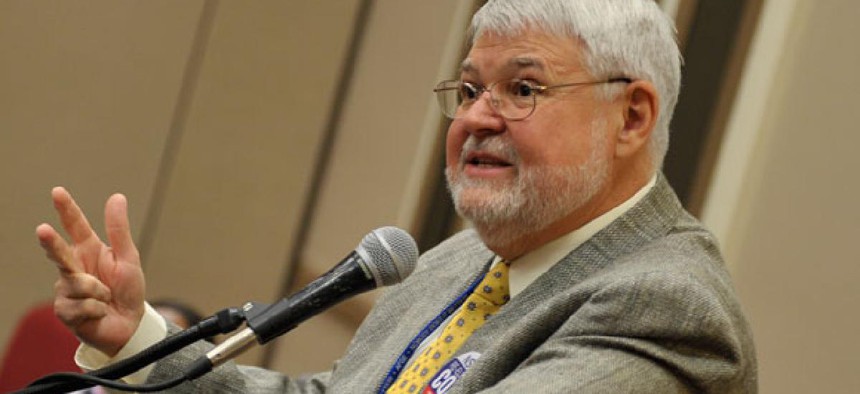
“The Heritage Foundation’s attempt to mislead the public and denigrate the work of public employees is all part of their campaign to dismantle vital government services," AFGE President J. David Cox said. AFGE photo
Feds fight back against claim they work less
Report doesn’t account for overtime disparities, critics note.
Federal employees are arguing that a new study by the Heritage Foundation is flawed in its conclusion that they are not only overpaid but also underworked when compared with their private sector peers.
A study Heritage released Tuesday found that federal employees work an average of 38.7 hours per week, roughly three hours less than the private sector average of 41.4 hours. That means that in one work year, federal employees work about 153 hours less -- or one month less -- than their private sector counterparts, the report stated.
Heritage used data from the Bureau of Labor Statistics’ American Time Use Survey from 2003 to 2010.
But nearly every federal employee who commented on Nextgov's story about the report argued that Heritage relied on faulty data, in part because not only are most federal employees not eligible for overtime pay, but most are required to document no more than 40 hours per work week, regardless of whether they worked any overtime. Most argued that they do work additional hours each week, whether in the office or teleworking.
“My staff routinely works 40+ hours per week,” one commenter said. “None of this is captured in the official records because we’re only allowed to charge 40 hours per week. I’m not aware of anyone in my organization who routinely shorts the government in their work hours and I know more than a few who routinely go over and above – to the point of teleworking during their vacations.”
Another noted: “This so-called study only looked at what federal employees are entitled to take, not what is actually taken. Many federal employees have thousands of hours of sick leave saved up; some employees lose leave each year because they exceeded the max carryover; and many employees donate leave to their co-workers who have a medical emergency and need even more leave than they have. This study took none of those things into account.”
Heritage noted that it did not control overtime pay in its report, which is often more available to private sector workers than public workers. The think tank claimed that including this control is “not directly relevant,” since the purpose of the report “is to measure work time in the public and private sectors, not to speculate about how much government employees might work if employment policies changed.”
Office of Personnel Management Director John Berry argued against the Heritage report’s claims, noting that federal employees are increasingly doing more with less. When Lyndon B. Johnson was president, there was one federal employee for every 92 Americans, but today, there is only one for every 145 Americans, Berry said.
“To suggest that the federal workforce is unproductive is plainly wrong: every day, our workers defend our country, protect our food, our water, our air and our borders,” Berry said. “They care for our returning veterans, they represent America’s values at outposts around the world -- and as we remembered yesterday -- they put a man on the moon. These are the most dedicated, committed, hardworking people I’ve ever had the pleasure to serve with.”
Meanwhile, the American Federation of Government Employees on Thursday released a statement blasting the report, noting that the Heritage Foundation had again manipulated data to way public opinion against government workers.
“The differences Heritage cite evaporate if one adjusts for firm size and length of service -- the two most important factors determining hours of work and paid time off,” AFGE President J. David Cox said. “The Heritage Foundation’s attempt to mislead the public and denigrate the work of public employees is all part of their campaign to dismantle vital government services. We must celebrate the work performed by public and private sector employees with the understanding that work connects us all.”







